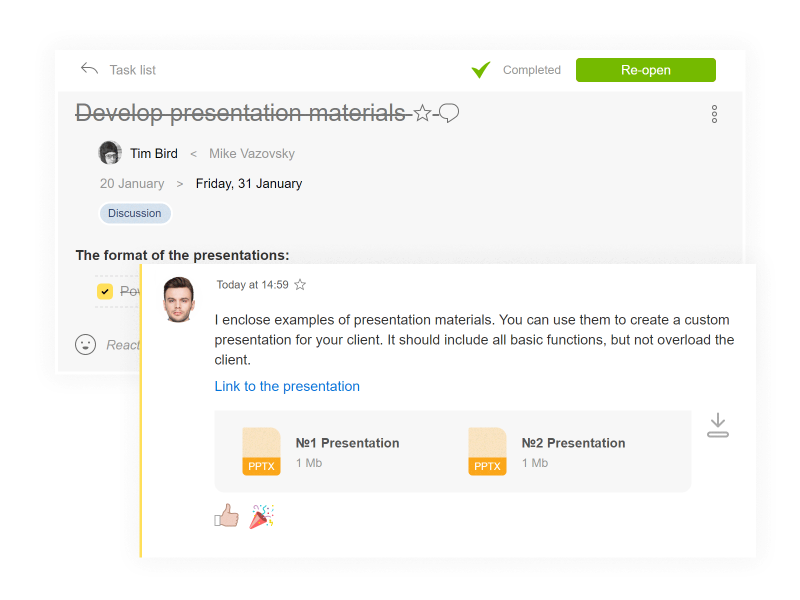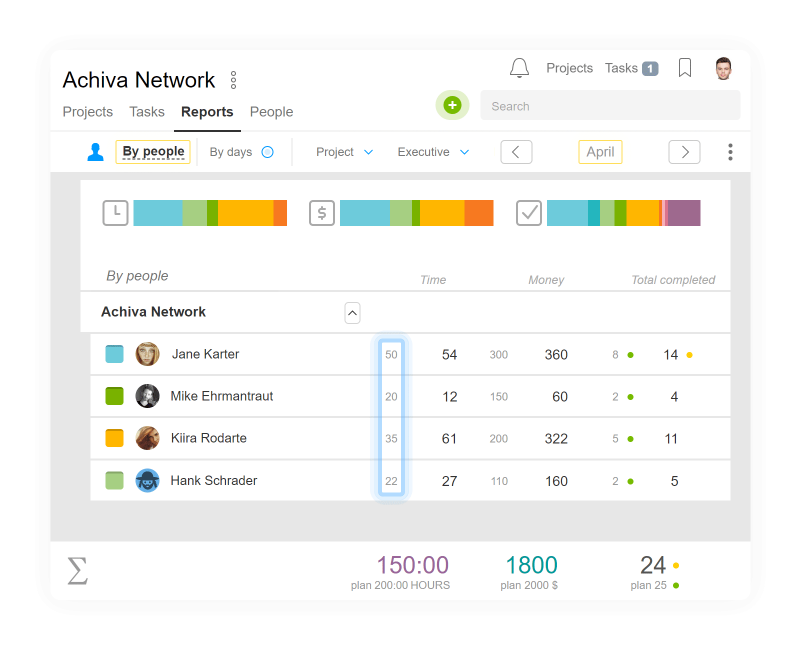About myself:
- Co-founder and partner of Achiva Network;
- Co-founder and partner of Galaxy Labs;
- I fly on paragliders, ride motorcycles;
- I manage a team consisting of 65 persons.
About work systematization
I have been involved in enterpreneurship for many years. There were moments when we were growing so fast that we had no time to employ people, and we just had to «extinguish fires» all days long. Many people think that entrepreneurship is some luxury. As a matter of fact, everything bumps up against reality, overloads, planning, time management, finances and all other things most people are not ready to.
If a business evolves, a stage where the number of employees exceeds 5 to reach 30 is inevitable. And you have no time to approach everyone to ask what he/she is doing. Most of companies get stuck at this very level of the transition from unsystematic to systematic management.
And by that moment, either you have a system or methodology, or everything is going to fail.
Moreover, any business requires a retrospective to grow. That means analysis of the work done and points for tasks to be set. People usually remember information selectively, and they tend to distort the past. Thus it is so important to record all ongoing events in tasks, to evaluate accurately the work and processes.
About project management
The way the work flows
Now we have 4 companies with 65 persons working for them. Each company has its individual Worksection account. We try to encompass everybody in the system: our employees, customers and subcontractors.
I adhere to the paradigm that there should be a single space for decision-making management.
If any employee works beyond the system, you are not able to synchronize him/her with other specialists. It leads to imbalance, and a person is disengaged from the general management system. That is why we currently connect even our external customers or subcontractors to Worksection (up to the extent they are ready to it, of course). Therefore, we reach ultimate transparency.
Arranging the work process
We start our work from planning. Every week, we hold trainings for coordination of the employees, and we conduct standups on a daily basis.
So far, we have appointed a project person to supervise all tasks. His duty is to make sure all tasks appear in Worksection after such meetings. He records the information about people having failed to set tasks, about points with missed deadlines, then he submits such data to the management. All tasks in the account are available to this person, except for the founders’ project. No control is needed there, I am good at self-control. But he monitors all projects and ensures that all tasks are set, executed, and that everything is done at the highest level.
About the kinds and rules of task setting
We enter both repeated (regular) tasks, such as weekly reports, control, procurement etc. and project-based ones in Worksection.
Project-based tasks are tasks for our technical specialists, for instance, to create a website. They have a separate project involving 5 specialists, namely the desktop publisher, designer, SEO specialist, programmer and project manager. In such project, all tasks are handled and all works are supervised in this direction.
In our experience, we have evolved the following mandatory task setting rules:
- Rule No. one: All verbal things do not exist. We evaluate work only based on tasks. If you have 4 hours on tasks, it means that basically your work duration is only equal to this time in a week. And here it is very important to make an employee entitled to reject even your own requests if you set tasks verbally. Accordingly, the employee disciplines both himself and you. Therefore, everyone attains mutual growth, which has a great value.
- Rule No. two: All tasks should have clear deadlines. Tasks must not be set without a deadline, since such tasks can easily be forgotten and failed. Any postponed deadline has to be motivated, i.e. its reason should be stated.
- Rule No. three: Task summaries should be written down. Before closing a task, write down what has been done (it is required by default). Without such summary, the task becomes absolutely senseless.
Why I actually use Worksection
So far, the most essential task of mine is to improve the control system, namely the performance management and control system. We are trying to transform what we have into a very linear system where each employee and management will find everything shown transparently.And the second thing adressed by Worksection is the summary of tasks completed.
It is an important objective for the management to find a task after some time and to understand what was done in it
Now we ask everyone to make a brief summary and to attach the final result to every task. For instance, you set a task for your employee to create a booklet. He/she may fulfill and then close it. But it will be wiser to write a comment and attach the booklet to retain it within the task. You may additionally indicate contacts of the best guys who create booklets. Thus, another employee will not have to do everything from scratch.

The way employees get accustomed to the system
According to our statistics, 80-90% of employees very quickly get accustomed and start working in the system.
The only problem is that young specialists get lazy and do not want to describe their work in tasks. We are struggling against it. If such person, e.g. a salesman, has some isolated functions, such wording is not needed. But any team work will turn into chaos and nightmare without articulation.
The main upsides
Worksection is great due to the fact that while all other team members are executing their tasks in it, you may view everything that concerns you without disturbing the person thus saving his/her time. For instance, when a recruiter is not directly subordinated to me, but when I want to improve the recruiting system. Before talking to him/her or setting a task to the manager, first I want to get to know what this person is doing in general. Accordingly, in the beginning, I look at his tasks. Additionally, I may view data for any period of time.
Due to it, I see the overal picture and find tasks which the recruiter, for example, is not obliged to do.
I can exempt him from such task and transfer it to another employee. Due to such simple action, the recruiter completes his/her tasks and becomes more efficient.
A great benefit here is yielded from the system. But it works productively provided that everybody uses 100% of it.
For the system to work efficiently, everybody should remain in it days and nights
What I like is also the filters. I track deadlines on them, and I get everything clear. The filters also facilitate evaluating the number of tasks tackled by each employee.

You may also view a report showing the number of tasks planned for an employee and actually completed by him/her.

The main downsides of the system
The biggest problem in the teams that I saw is their management methodology rather than the system itself. No matter how smart Worksection is, it does not solve basic problems.
If you have no basic discipline for your employees, none of the systems will help you obtain it.
It would be cool if Worksection provided advice on project methodologies with such basic subjects as how to entitle tasks smartly, the importance of deadlines etc. For most of small companies, it would solve a lot of problems.
Sometimes, when there are projects for 10-15 persons, overabundance of notifications irritates. I forget to cancel notifications, and they are sent to everybody involved in the project. And many people react, write comments. But this problem stems from my personal task setting discipline rather than from the system.
Suitability for business areas
The system is suitable for companies with 3 to 50 employees, where business processes are not the most complex ones. For instance, large scale production of vehicles is most likely to have other requirements.
But it perfectly suits IT specialists, SEO companies and web-studios craving for convenience everywhere. At the same time, I am sure that Worksection will be excellently suitable for other businesses as well. For example, it will be beneficial for food provision companies or for companies dealing with customers.
What is convenient in Worksection?
I tried a lot of different systems. They are not worse, but they are more complicated or unsuitable. For instance, Basecamp is much easier, but its functionality is insufficient. It is perfect for teams of up to 10 persons «slicing» websites. But as soon as you get parallel processes, departments or some more important things, it is not a fun any more. Asana seemed to be very complex, but for me it’s important to get a quick start in such framework, literally within a couple of days. Thus it should be intuitive.
From the very first day of using Worksection, I understood where the projects and tasks were
But in many systems it is not always so definite and clear what is going on and where.
Perhaps, without Worksection we would not lose much efficiency, since everybody knows his/her tasks, being much likely to draft them anew. But we would experience a drastic loss of transparency. We would become a crowd of people involved in a mess of inexplicit things.
